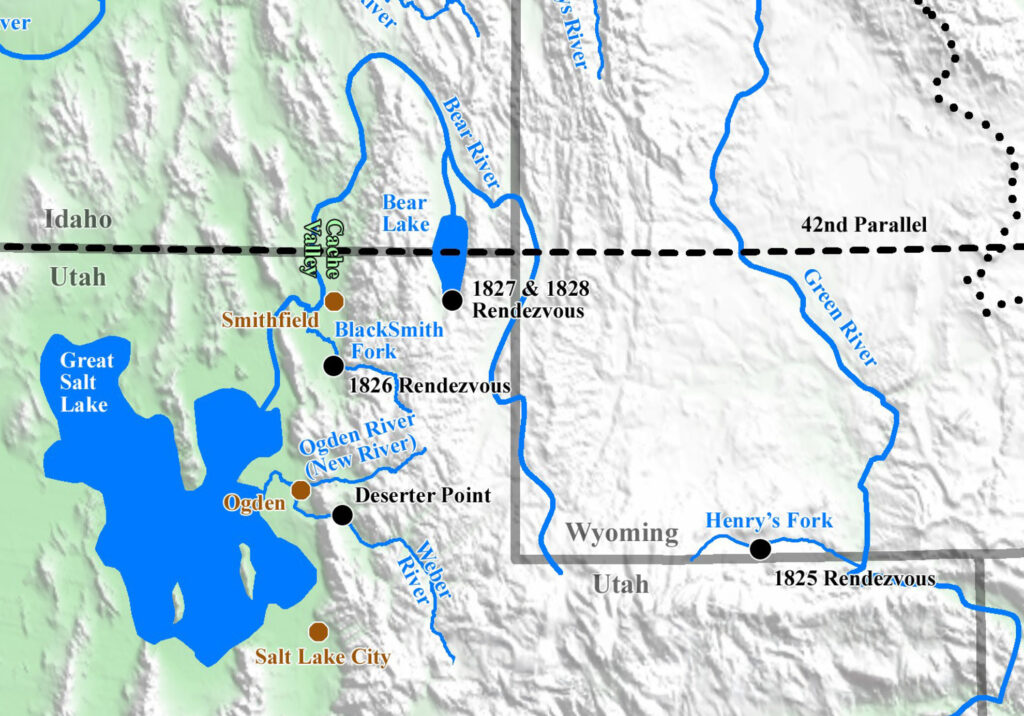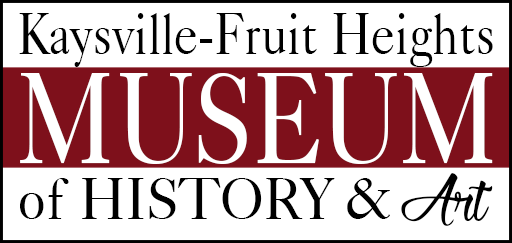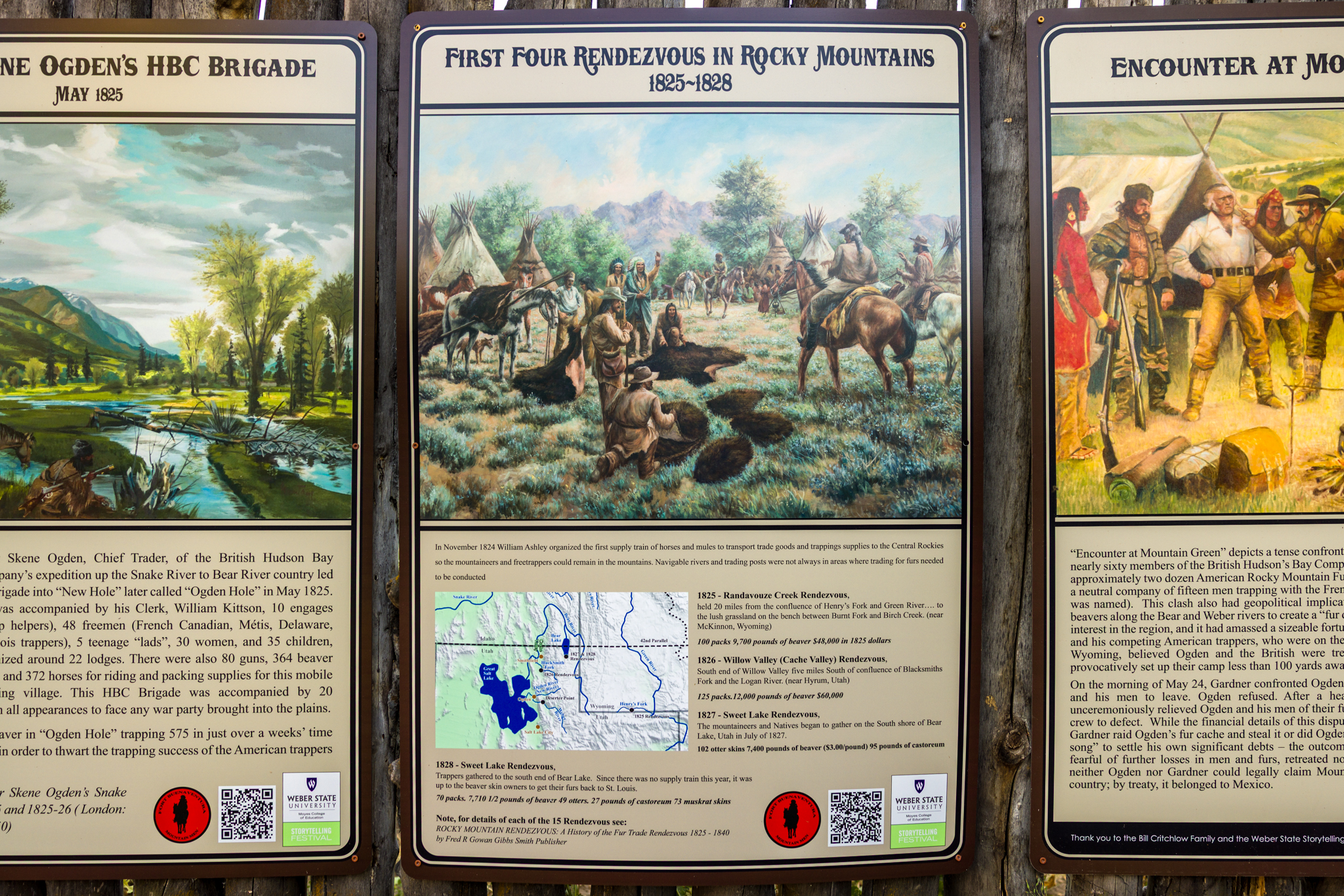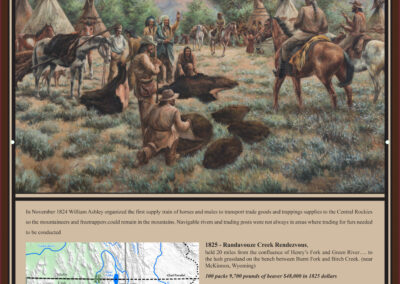HISTORIC MARKER
Fort Buenaventura
41° 12′ 53.3″ N • 111° 59′ 23.8″ W
 The inaugural rendezvous in 1825 took place at Henry’s Fork of the Green River in Wyoming, organized by William Henry Ashley. This event, held from late June to early July, was a pioneering effort to centralize the fur trade, bringing trappers together to exchange beaver pelts for supplies like tobacco, cloth, and tools. Ashley’s expedition, detailed in earlier records such as the Randaous Creek notes, had explored and cached goods along rivers like the Green and Strawberry, setting the stage for this rendezvous. Approximately 100 trappers and traders attended, establishing a model for future gatherings with a mix of commerce and social interaction, though specific ties to Bear Lake or the Uintah region were minimal at this stage.
The inaugural rendezvous in 1825 took place at Henry’s Fork of the Green River in Wyoming, organized by William Henry Ashley. This event, held from late June to early July, was a pioneering effort to centralize the fur trade, bringing trappers together to exchange beaver pelts for supplies like tobacco, cloth, and tools. Ashley’s expedition, detailed in earlier records such as the Randaous Creek notes, had explored and cached goods along rivers like the Green and Strawberry, setting the stage for this rendezvous. Approximately 100 trappers and traders attended, establishing a model for future gatherings with a mix of commerce and social interaction, though specific ties to Bear Lake or the Uintah region were minimal at this stage.
In 1826, the rendezvous shifted to Cache Valley, near present-day Hyrum, Utah, occurring around mid-July. This second gathering was led by Jedediah Smith and Robert Campbell, who brought a supply caravan after Ashley sold his interests in the fur company to Smith, Jackson, and Sublette. Historians debate the exact location, with Cove and Hyrum as potential sites, but the valley’s fertile setting supported a larger attendance, estimated at 150-200 people. The event highlighted the transition in leadership and the logistical challenge of transporting goods across rugged terrain, with cached supplies from prior explorations likely utilized. This rendezvous also saw increased interaction with local tribes, shaping trade dynamics.
The 1827 rendezvous returned to a lakeside setting at Bear Lake, near Laketown, Utah, held in late June to early July. Under the new Smith, Jackson, and Sublette firm, this was the first rendezvous at this location, attracting around 200-300 participants. The scenic lake provided a strategic base, but the event faced challenges, including inflated supply prices due to late arrivals and tensions with the Blackfoot tribe, which disrupted trade. Jedediah Smith’s dramatic entrance with a cannon salute underscored his leadership, while the proximity to the North Slope of the Uintah Mountains may have influenced scouting expeditions, though direct evidence is limited.
The 1828 rendezvous repeated at Bear Lake, Utah, from late June to early July, with a similar attendance of 200-300. This event continued the previous year’s patterns, with ongoing Blackfoot conflicts posing threats and a late-arriving fur caravan complicating logistics. The repetition of the location suggests its strategic value, possibly linked to its proximity to the Uintah region’s resources. Despite these challenges, the rendezvous reinforced the social and economic fabric of the fur trade, with trappers and traders adapting to the region’s demands.
These early rendezvous, while not all directly centered on the North Slope of the Uintah Mountains, collectively expanded the fur trade network across the Bear Lake and Cache Valley areas, laying groundwork for later explorations and settlements in the region.
Sources
-
ROCKY MOUNTAIN RENDEZVOUS: A History of the Fur Trade Rendezvous 1825 – 1840 by Fred R Gowan Gibbs Smith Publisher
(Click images below for larger view)
Historic Marker



